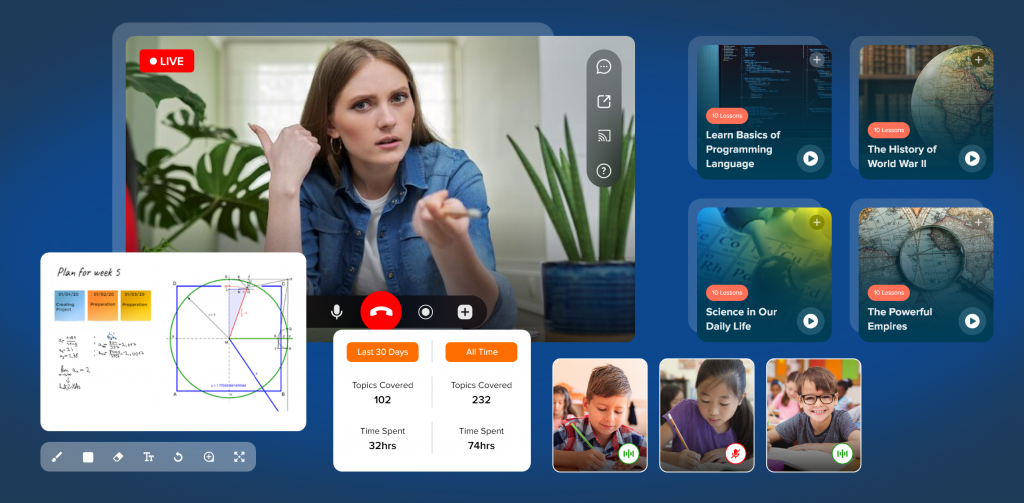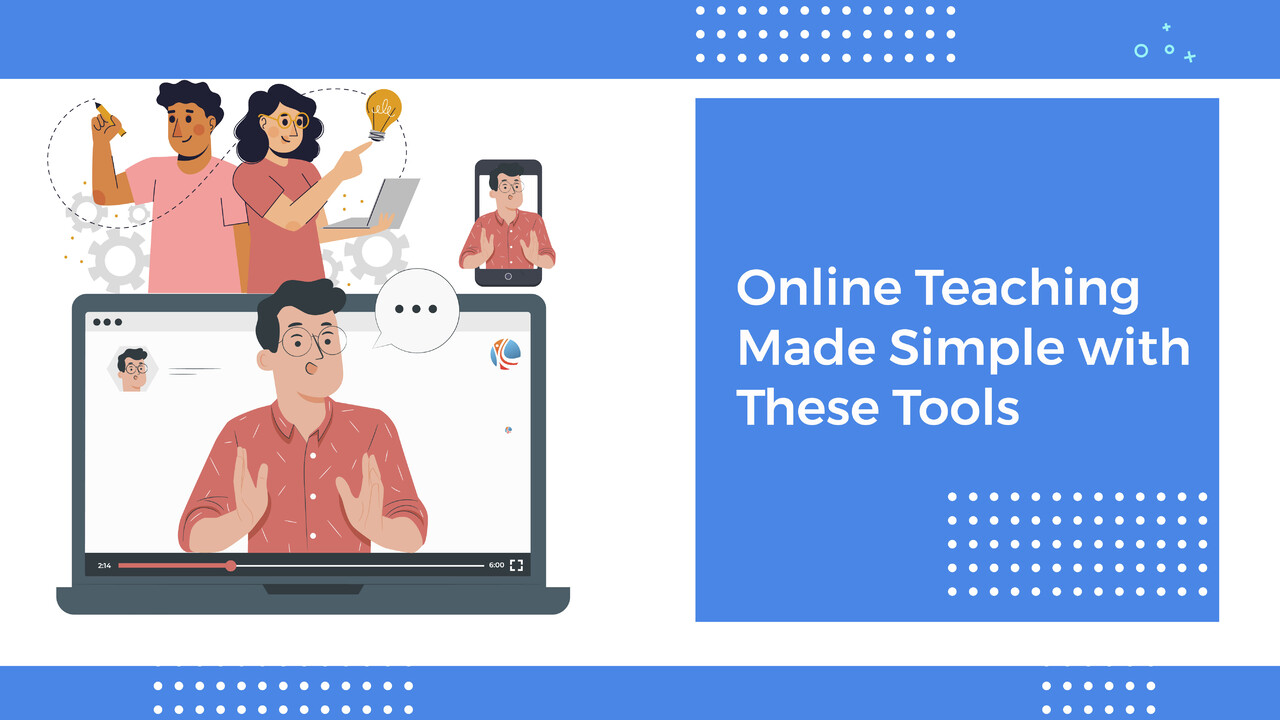1. Introduction to online education live streaming apps
- Importance of online education
- Rise in demand for live streaming apps
2. Understanding the development process
- Market research and analysis
- Choosing the right technology stack
- Design and user experience considerations
3. Key features of online education live streaming apps
- Live streaming functionality
- Interactive features like chat and polls
- Integration with learning management systems
- Security measures for safeguarding data
4. Steps to develop an online education live streaming app
- Defining the scope and objectives
- Creating wireframes and prototypes
- Development and testing phases
- Deployment and ongoing maintenance
5. Challenges in developing live streaming apps for education
- Bandwidth and connectivity issues
- Ensuring scalability and reliability
- Addressing privacy concerns
6. Best practices for successful app development
- Prioritizing user engagement and interactivity
- Offering seamless integration with existing platforms
- Providing robust customer support and feedback mechanisms
7. Case studies of successful online education live streaming apps
- Examples of apps with innovative features and strong user adoption
- Lessons learned from their development and growth strategies
8. Future trends and opportunities in the online education industry
- Adoption of augmented reality and virtual reality technologies
- Personalized learning experiences through AI-driven content recommendations
- Expansion into emerging markets and untapped demographics
9. Conclusion
- Recap of the importance of online education live streaming apps
- Summary of key considerations for developers
- Encouragement to embrace the potential of technology in education
# Development of an Online Education Live Streaming App
Introduction
In today's digital age, the landscape of education is evolving rapidly, with a significant shift towards online learning platforms. The emergence of online education live streaming apps has revolutionized the way people access educational content, providing convenience, flexibility, and interactivity like never before.
Understanding the Development Process
#Market Research and Analysis
Before diving into the development phase, thorough market research is crucial to understand the needs and preferences of the target audience. Analyzing competitors and identifying market gaps will help in shaping the app's unique value proposition.
#Choosing the Right Technology Stack
Selecting the appropriate technology stack is paramount to ensure the app's performance, scalability, and security. Factors such as the desired features, expected user load, and budget
constraints influence the choice of programming languages, frameworks, and cloud infrastructure.

#Design and User Experience Considerations
The user interface and experience play a pivotal role in the success of any app. Prioritizing intuitive navigation, visually appealing design elements, and seamless interaction will enhance user engagement and retention.
Key Features of Online Education Live Streaming Apps
Online education live streaming apps offer a plethora of features tailored to facilitate effective learning experiences:
- Live Streaming Functionality: Seamless streaming of lectures, workshops, and tutorials in real-time.
- Interactive Features: Chat rooms, Q&A sessions, and polling tools foster engagement and collaboration among students and instructors.
- Integration with Learning Management Systems: Syncing with existing LMS platforms enables seamless access to course materials, assignments, and assessments.
- Security Measures: Implementing encryption protocols and access controls ensures the confidentiality and integrity of user data.
Steps to Develop an Online Education Live Streaming App
The development process encompasses several stages:
#Defining the Scope and Objectives
Clearly outlining the app's goals, target audience, and feature set lays the foundation for a successful development journey.
#Creating Wireframes and Prototypes
Storyboarding the app's layout and functionality through wireframes and prototypes helps visualize the user flow and gather feedback early in the process.

#Development and Testing Phases
Collaboration between developers, designers, and quality assurance teams is essential to code, iterate, and refine the app iteratively.
#Deployment and Ongoing Maintenance
Launching the app to the market is just the beginning; continuous monitoring, updates, and enhancements are imperative to keep pace with evolving user needs and technological advancements.
Challenges in Developing Live Streaming Apps for Education
Despite the benefits, developing online education live streaming apps comes with its own set of challenges:
- Bandwidth and Connectivity Issues: Ensuring seamless streaming experiences across varying network conditions and devices.
- Scalability and Reliability: Anticipating spikes in user traffic and optimizing server infrastructure to handle concurrent users without performance degradation.
- Addressing Privacy Concerns: Implementing robust data protection measures to safeguard sensitive information and comply with regulatory standards.
Best Practices for Successful App Development
To maximize the app's potential for success, consider the following best practices:
- Prioritizing User Engagement: Incorporate features that encourage active participation and interaction, such as gamification elements and social sharing integrations.
- Seamless Integration: Enable seamless integration with popular LMS platforms and third-party tools to enhance the app's utility and accessibility.
- Robust Customer Support: Establish channels for user feedback and support to address queries, troubleshoot issues, and foster a sense of community.
Case Studies of Successful Online Education Live Streaming Apps
Several online education live streaming apps have achieved remarkable success by innovating and adapting to market demands. For instance:
- Khan Academy: Known for its extensive library of educational resources and interactive learning exercises, Khan Academy has garnered millions of users worldwide.
- Coursera: Offering courses from leading universities and institutions, Coursera's live streaming capabilities enable learners to engage with instructors and peers in real-time.
Future Trends and Opportunities in the Online Education Industry
The future of online education holds immense potential for innovation and growth:
- Augmented Reality and Virtual Reality: Immersive technologies have the power to transform traditional learning experiences, making education more interactive and engaging.
- AI-Driven Personalization: Leveraging artificial intelligence to analyze user behavior and tailor content recommendations based on individual learning preferences and goals.
- Expansion into Emerging Markets: With the increasing accessibility of smartphones and internet connectivity, online education platforms have the opportunity to reach underserved communities and bridge the digital divide.
The development of online education live streaming apps represents a paradigm shift in the way knowledge is imparted and acquired. By harnessing the power of technology, educators can create dynamic, engaging, and accessible learning experiences that transcend geographical barriers and empower learners worldwide.
Unique FAQs
1. What distinguishes online education live streaming apps from traditional learning methods?
Online education live streaming apps offer real-time interaction, flexibility, and access to a diverse range of educational content, enabling learners to engage with instructors and peers from anywhere in the world.
2. How secure are online education live streaming apps in terms of protecting user data?
Leading apps employ advanced encryption protocols and access controls to safeguard user information, ensuring compliance with stringent data protection regulations.
3. Can online education live streaming apps cater to different learning styles and preferences?
Yes, many apps offer customizable learning paths, adaptive assessments, and personalized recommendations to accommodate diverse learning needs and preferences.
4. Are online education live streaming apps suitable for all age groups and educational levels?
Absolutely, online education live streaming apps cater to learners of all ages and educational backgrounds, from K-12





